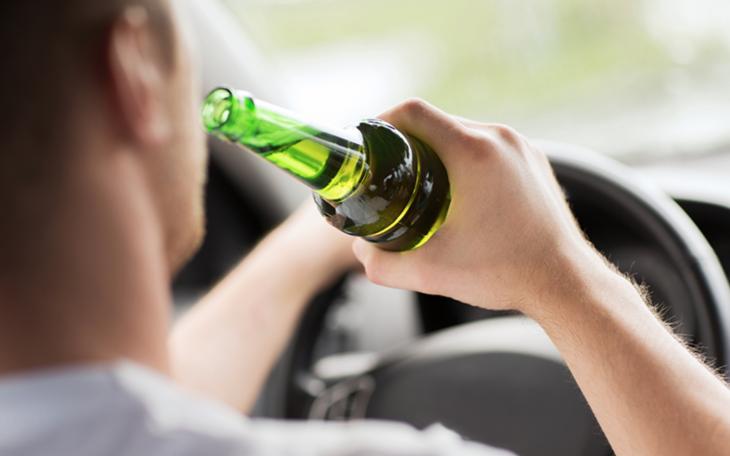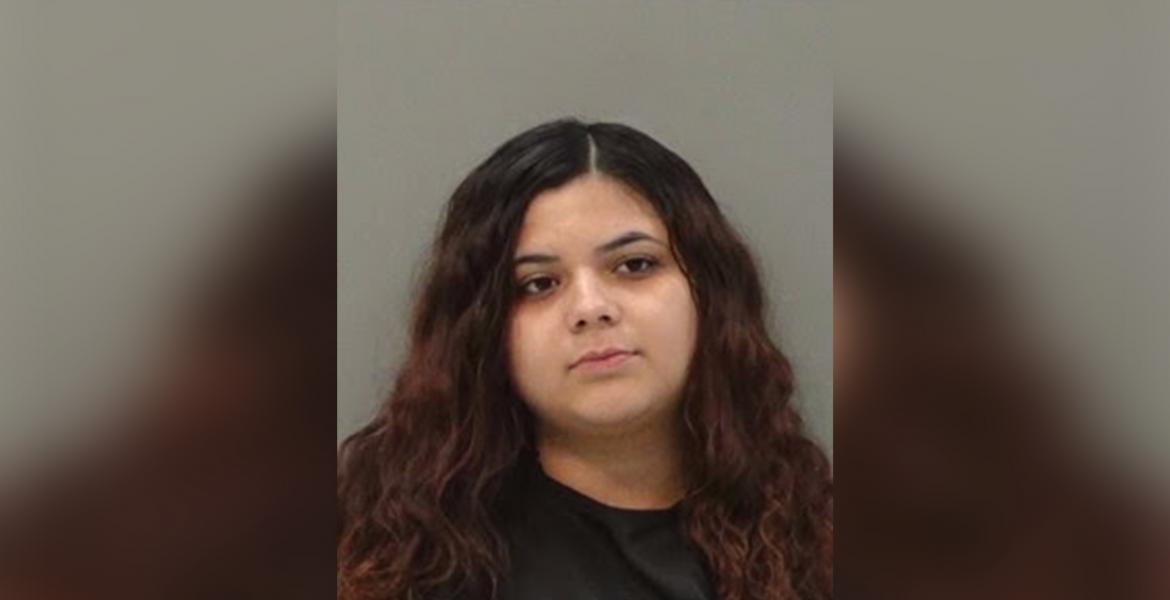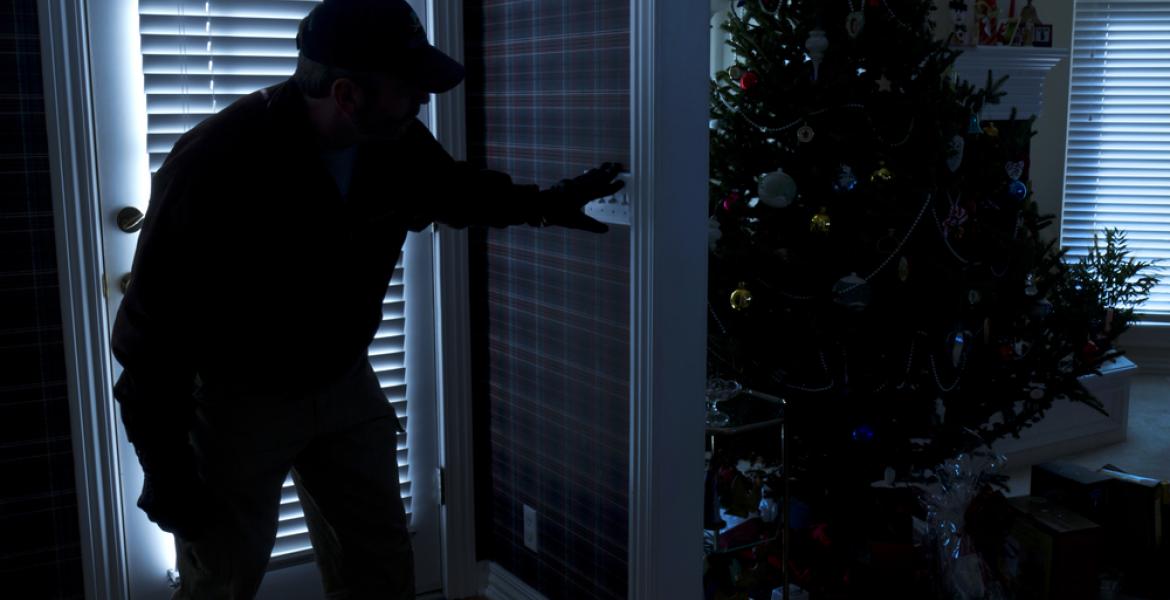ELDORADO, TX — The 119th DA John Best projected on the overhead screen the most damning evidence against Michael Gary Keene in the Schleicher County Courtroom Friday.
Keene is accused of manslaughter and an accident involving death for a June 16, 2015 incident on the eastbound access road in the 4500 block of the Houston Harte Expressway. Just after 7 a.m. that morning, the body of Gisele Jarmon was located lying just beyond the access road’s curb between the access road and the freeway. Keene was arrested and charged. He posted a $50,000 bond and has been free awaiting trial. Police said that Jarmon was mentally challenged and had left home after an argument.
In Best’s photograph, it depicted a shattered windshield that appeared to have been impacted with a human head just above the State registration sticker. The frame of the front windshield was badly dented as well, from what appeared to be the same impact. In court testimony Friday, it was learned that the 2001 Toyota Camry with that shattered windshield belonged to the deceased grandmother of Keene and prosecutors think this was the vehicle Keene was driving when he hit and killed Jarmon.
The prosecution tediously presented evidence and testimony of a San Angelo Police Department detective Chris Soto and Traffic Investigator Cpl. Mike Gesch. But the defense, led by San Angelo attorney J.W. Johnson, was able to cast doubt on law enforcement’s testimony.
The 12 Schleicher County jurors, seven women and five men, dressed in Levi’s, Wranglers or Riatas, watched intently as DA Best quizzed Soto about the interrogation of Keene at the police station on June 16, 2015 the day the incident. The video of the interview was played. At 3 p.m. that day in 2015, the interview began cordially, but as the end of the first interview was concluding, Soto admits to Keene that she didn’t believe he was telling the truth. Keene, who fidgeted throughout the interview, grew angry and told the three police officers conducting the interrogation that he wanted a lawyer before he’d speak further.
Throughout the video of the interview, Keene maintains he thought he hit a piece of metal. He was driving home from the Texas Roadhouse where he worked in the kitchen. It was around 12:40 a.m.
After hitting the metal object, as he claimed it “felt” like, Keene said he continued driving down the access road towards home. But soon after he arrived at his apartment on Arden Road, he decided to go back to where the incident happened and see if he could see what he hit, and maybe retrieve a piece missing from the front left headlight. He claimed it was raining.
But Soto would have none of the talk about a metal object. Metal would sound sharper than the thump of hitting a soft body of human.
On cross-examination, defense attorney J.W. Johnson sowed doubt on Detective Soto’s investigation. “How long did you have Mr. Keene in there?” he asked of the interrogation at the police station. It turns out, Soto and company were wearing Keene down. He was there from 3 p.m. until 11p.m. that day, eight hours of grilling without a lawyer present.
“Did you get him anything to eat,” Johnson asked. Soto said they ordered pizza.
Keene is facing two indictments for this incident and both are being tried concurrently. The first charge is Accident Involving Death. The grand jury accused Keene of fleeing the scene of the crash and failing to stop and render aid.
“Mr. Keene said he didn’t know he hit a person. He returned to the scene right after he arrived at home to look for something he had hit,” Johnson said. Keene told police he didn’t find anything upon his return to the scene via a drive-by.
“If you cannot see a body, you cannot render aid,” Johnson said.
Johnson accused Soto of making a quick determination that Keene was lying because his story did not match up with her predetermined theory of what happened in her own mind. This would be a recurring theme Friday in court. “That he (Keene) was lying (at the first interview) is based upon your subjective reasoning that you know he must have seen a body. And you filed charges for that?” Johnson said.
Johnson made another point. Soto failed to mention in the original arrest affidavit that Keene had returned to the scene looking for Camry parts, as well as whatever his car hit. Would Justice of the Peace Judge JP McGuire have signed the arrest warrant if he knew Keene had accomplished what the laws require him to do—to return to the scene?
Johnson added that seeing the body must have been quite impossible. The incident happened at around 12:40 a.m. Between that time and until 7:03 a.m., no one else saw the body either.
Then, Johnson brought up traffic pedestrian laws. Apparently, according to Texas law, when a victim jaywalked across the access road, she didn’t have the right-of way. If she used a crosswalk, she would have, said Johnson. Soto was unfamiliar with pedestrian laws, she said.
Best objected to this, claiming Johnson was asking the jury how to interpret the laws. Judge Barbara Walther told the jury when she issues them their charge, she and she alone will tell the jury what laws they are to consider, and what they contain.
Johnson continued to question Soto on her investigation. Johnson claimed Soto went around the town looking for surveillance video footage at far-flung places like Midnight Rodeo and The Little River Club, not nearby places where it would have revealed more about the incident. Soto was trying to find Keene on video drinking at other establishments instead, Johnson claimed. Soto’s videos did not reveal any of that, as Keene went out drinking with friends at a private residence after the incident. And he didn’t drive. The apartments where Keene resided had video footage backing up Keene's statements to police. That footage shows Keene leaving the parking lot shortly after arriving there, likely to to revisit the crash scene as he told police.
“What evidentiary value would be on those videos in the immediate area rather than two miles away on S. Bryant Blvd.?” asked Johnson.
Johnson noted to Soto that all of the friends Keene mentioned during his interrogation were interviewed. “And all of them corroborated Keene’s story, didn’t they?” he said. “But you didn’t want to believe them either. Does 22 years on the police force make you that cynical?”
The defense earned two major victories over the admission of evidence. Johnson, realizing that the strongest evidence against his client is the visual depiction of the damage to the windshield by the victim’s head hitting it at 55 mph or more, did not want the jury to see the actual windshield.
Arguing that tape placed over the area where the head impacted changed the entire context of the evidence, Johnson convinced Walther to throw the evidence out. Best said he only needed it for context of where DNA was discovered during testimony of a DNA expert.
In another big win for the defense, the contents of Keene’s Apple iPhone were not allowed into evidence. Johnson and co-counsel John Carroll of San Antonio, took Soto to task because of events logged in the iPhone’s system logs after the phone was in custody of police. The defense claimed a text message dated after the date police seized the phone was sent and its contents involved a drug deal. Soto admitted that the iPhone was stored in her desk, not the evidence room, after the forensic study.
Walther agreed again with the defense. She threw out the extracted files and information from the iPhone. She was worried about the phone’s having a secure chain of custody and she said she was not satisfied with the explanation as to why data was being logged on the cell phone after it was in police custody. In court, the event log discrepancies were called “glitches.”
Without the iPhone data, the prosecution is denied the use of cell phone call records and the contents of the text messages for future testimony.
Friday’s court session ended with prosecution and defense teams interviewing SAPD Traffic Investigator Mike Gesch.
Gesch testified that the body could have been thrown 35 to 40 feet and explained the debris field and how it was consistent with Keene’s vehicle hitting a human.
The prosecution continues Monday at 10 a.m. in the Schleicher County Courthouse at 10 a.m.
Both charges against Keene are Second Degree Felonies. He faces 2 to 20 years in prison and a fine not to exceed $10,000 for each offense.
Two footnotes. When police found Keene the afternoon of June 16, 2015, Keene told police that he found out there was a body there after reading the article about the incident on San Angelo LIVE! Also, the trial was moved to Schleicher County after the defense argued successfully that the reach of San Angelo LIVE! was so far and wide that widespread knowledge of the incident would taint any jury gathered from among the citizens of Tom Green County.
Subscribe to the LIVE! Daily
Required






Post a comment to this article here: